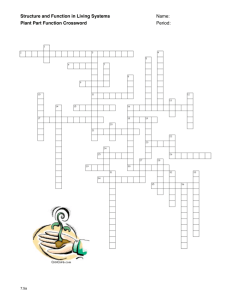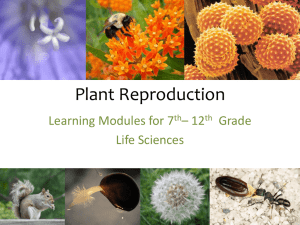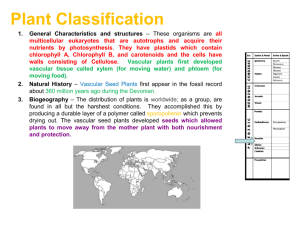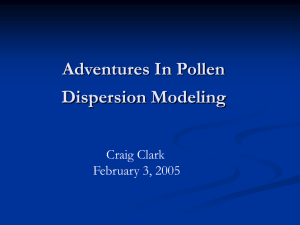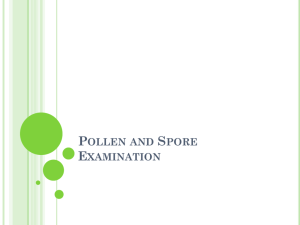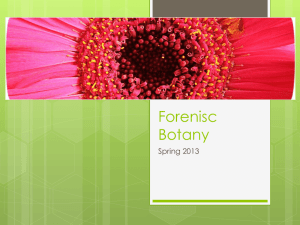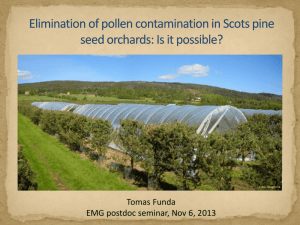7 Step - 3rd Grade Reading
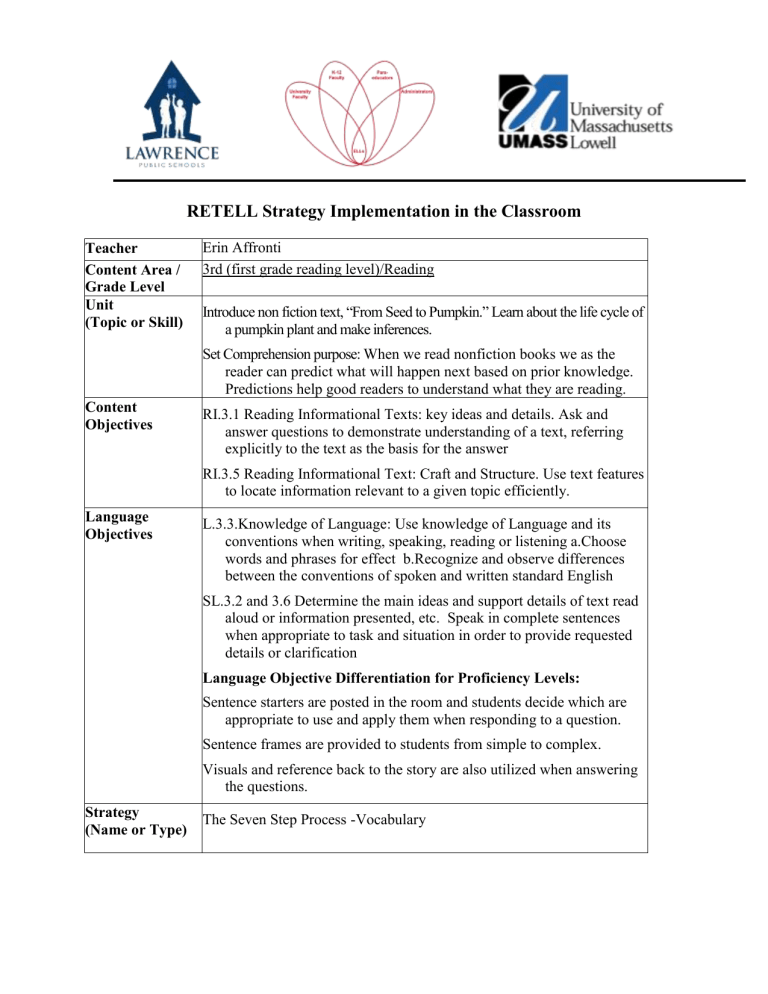
Teacher
Content Area /
Grade Level
Unit
(Topic or Skill)
RETELL Strategy Implementation in the Classroom
Erin Affronti
3rd (first grade reading level)/Reading
Introduce non fiction text, “From Seed to Pumpkin.” Learn about the life cycle of a pumpkin plant and make inferences.
Set Comprehension purpose: When we read nonfiction books we as the reader can predict what will happen next based on prior knowledge.
Predictions help good readers to understand what they are reading.
Content
Objectives
RI.3.1 Reading Informational Texts: key ideas and details. Ask and answer questions to demonstrate understanding of a text, referring explicitly to the text as the basis for the answer
RI.3.5 Reading Informational Text: Craft and Structure. Use text features to locate information relevant to a given topic efficiently.
Language
Objectives
L.3.3.Knowledge of Language: Use knowledge of Language and its conventions when writing, speaking, reading or listening a.Choose words and phrases for effect b.Recognize and observe differences between the conventions of spoken and written standard English
SL.3.2 and 3.6 Determine the main ideas and support details of text read aloud or information presented, etc. Speak in complete sentences when appropriate to task and situation in order to provide requested details or clarification
Language Objective Differentiation for Proficiency Levels:
Sentence starters are posted in the room and students decide which are appropriate to use and apply them when responding to a question.
Sentence frames are provided to students from simple to complex.
Visuals and reference back to the story are also utilized when answering the questions.
Strategy
(Name or Type)
The Seven Step Process -Vocabulary
Brief explanation
1.
For Pre-teaching Vocabulary - use of the Seven Step Process and of how the vocabulary cards with picture on one side and word on the other. strategy was used a.
Teacher says the word and students repeat 3 times (pollen, pollen, pollen). b.
Teacher states the word in context from the text. c.
Teacher provided the dictionary definition “a fine powder produced by certain plants when they reproduce.” d.
Teacher explains the meaning using student friendly definitions.
“usually a yellow dust from a plant” “The bee carried the pollen on its legs from one plant to another.” e.
Teacher highlights features of the word: “Pollen is a non count noun” you would not say pollens. f.
Teacher engages students in activities to develop word/concept knowledge. With a partner try to fill in the blank about pollen...
“pollen can be found ______” or “pollen is usually the color
______” or “pollen can sometimes make you s_____.” g.
Teacher assigns peer reading with oral and written summarization activities and explains how new words will be used. Students whisper read story and answer questions together as a group.
Reflection: How
The seven step process helped to make the content comprehensible to my and why was the strategy effective?
ELL students in my classroom because it provided clarification, practice with the words and time to apply the words. Instead of just
What might you figuring out the word or skipping it when coming across it in the change for next reading students are able to really look at the word, practice saying time? and using it, understand the word’s meaning in a formal as well as kid friendly way, look forward to seeing it in the reading, and have a better understanding of how the word will be used and why. I think that giving the time to vocabulary before reading gets students excited about what they will read and gives them the power to better understand what they will read.
The 7 step strategy helped my ELLs in the classroom produce academic language and discourse because it exposed them more to the vocabulary and therefore gave them a greater understanding of the core concept of the lesson. Also the use of the sentence frames, with practicing the vocabulary and reading a text with the vocabulary really provided the students the tools they needed to be able to engage in conversation about the text.
The next time I try this strategy I will ask students to make a connection to the word in step 6, word/concepts and knowledge. I will use the picture provided to help them do this. One component that is not included in the 7 Step to better vocabulary that I use is realia. I think the picture really helps students to create a deeper connection and therefore grasp a greater understanding of the word.
The following is the lesson sequence, I thought I would include it down here as it may be helpful for others.
Hook: Use sense of touch to guess what we will be reading about. Pumpkins passed around in bags for students to feel.
Introduce non fiction text, “From Seed to Pumpkin.” Learn about the life cycle of a pumpkin plant as well as make inferences .
Pre teach vocabulary: petal, patch, pollen, ripe, shoot, stem, seed, soil
Model word solving skill: lips the fish, chunky monkey and eagle eye
Set Comprehension purpose: When we read nonfiction books we as the reader can predict what will happen next based on prior knowledge. Predictions help good readers to understand what they are reading.
Whisper read: 10 minutes
Comprehension questions within, about and beyond:
1.
Turn to page 4 and 5. What is happening this picture? What will happen next? What clues in this picture tell us that the seed will keep growing? What we do know already about plants that tell us the seed will keep growing? (seed is sprouting, plant will start to grow, discuss prior knowledge)
2.
Turn to the next page was your prediction correct? How long do you think it took for the plant to grow to this level? (plant grows stems and leaves)
3.
What is a glossary? (glossary defines unfamiliar words from the book) What can it be used for/Why is it helpful? (A glossary can be used before reading to find out what unfamiliar words will appear in the book. ) How are the words listed? (alphabetical order and may include phonetic pronunciation).
4.
What are the stages in a plants life cycle? (use poster to provide visual and help formulate sentences for discussion)


